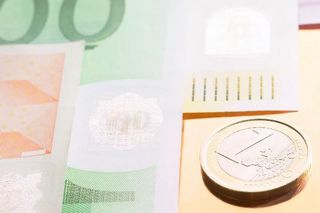Estonia adopts the euro

Estonians will start using the euro on 1 January 2011. Good advance planning and public information should make for a smooth changeover from the kroon.
Recent publicity campaigns have aimed to prevent confusion about the conversion rate – so that shoppers know how much they are spending and don't fall prey to dishonest traders.
In November, Estonians received leaflets with practical details and two handy reference cards – one with a kroon–euro conversion chart and the other explaining the anti–forgery features on the banknotes.
From 1 December, coin starter kits have been available from banks, so the public can get a feeling for the currency.
Meanwhile, back in August, retailers, financial institutions and local governments were invited to sign up to a fair pricing agreement, pledging them not to increase their prices without good cause after the changeover.
For the first two weeks of the changeover, Estonian kroons and euros will circulate alongside each other, after which the euro will become the sole legal tender. To help consumers, retailers began displaying prices in both currencies on 1 July 2010, and must continue to until 20 June 2011.
Government's Consumer Protection Board will monitor businesses and prices, and will make public any information about major violations of the rules.
Estonia joined the EU in 2004 and has fervently pursued economic reform, earning itself the nickname “Baltic tiger”. The economy is highly flexible and, while not immune to the crisis, has shown its ability to operate and adjust under a fixed exchange rate for close to two decades.
But euro adoption is not the end of the road. As the 17th eurozone member, Estonia will be required to pursue policies on debt and budget deficits that support economic growth, job creation and a stable inflation rate.
Other recent additions to the euro area include Slovenia, which joined in 2007, Cyprus and Malta in 2008 and Slovakia in 2009.